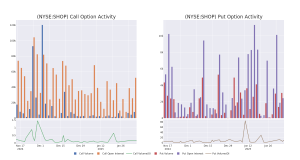If you asked the professional analyst community about ride-sharing company Lyft (NASDAQ: LYFT), they’d collectively tell you that the stock has strong upside potential. As of this writing, the average price target from analysts is $18.69 per share, according to the 32 analysts tracked by TipRanks. That points to nearly 40% upside from where it trades, as of this writing.
That said, the analyst community is often wrong. And I believe that it’s wrong again when it comes to its price target for Lyft. But I don’t mean that in the way that you might think.
I don’t believe that analysts are overestimating the potential of a Lyft investment today. To the contrary, I believe it has much higher upside potential than what it gets credit for, and I consequently believe that Lyft stock is a buy today.
There’s no denying that Uber Technologies (NYSE: UBER) is the 800-pound gorilla in the ride-sharing space. But Lyft is solidly in second place in the U.S., benefiting from ongoing adoption trends. The ride-sharing space continues to gain ground, generally speaking. And this industry growth helped Lyft set a record for active riders in the third quarter of 2024.
In Q3, Lyft had 24.4 million active riders, up 9% year over year. The company also set a record for rides during the quarter. There were 217 million rides in Q3, up 16%. Therefore, these metrics clearly demonstrate two things: Lyft is attracting more users, and these users are riding with Lyft more frequently.
Those are good underlying business trends. But Lyft’s financials are also trending in a positive direction. CEO David Risher took over in April 2023. The chart clearly shows that something happened around that time.
As is evident from the chart, Lyft’s new CEO was serious about free cash flow, and the company quickly improved. Today, it’s free cash flow positive for the first time in its history.
To recap, adoption levels for Lyft’s business are encouraging, it’s growing, and it’s now also profitable under new management. These things provide a good start for a solid investment thesis.
When it comes to valuation, Lyft looks like a screaming bargain. Compared to Uber, Lyft stock is valued more than 60% cheaper. This is true when measuring the price-to-sales (P/S) valuation as well as measuring the price-to-free cash flow valuation.
The kicker here is that Lyft’s revenue is currently growing faster than Uber’s revenue. Usually, the higher-growth business has the higher valuation. But as the chart shows, Lyft is both higher-growth and cheaper, which is a rare combination.
